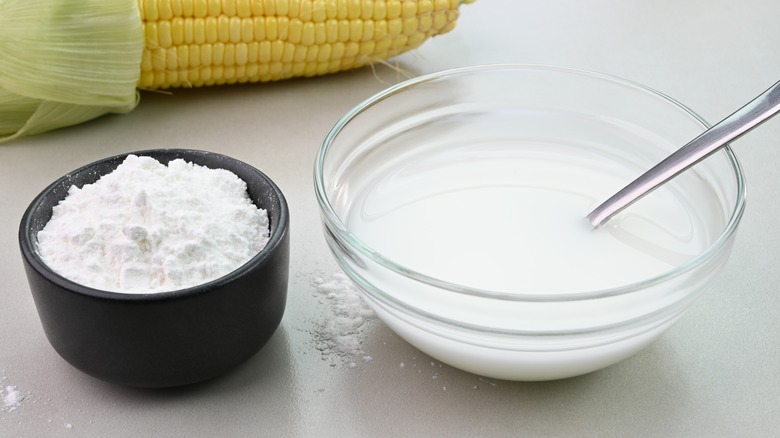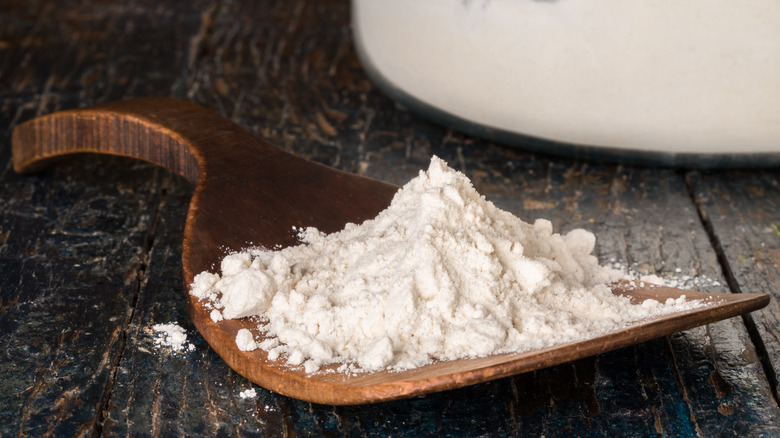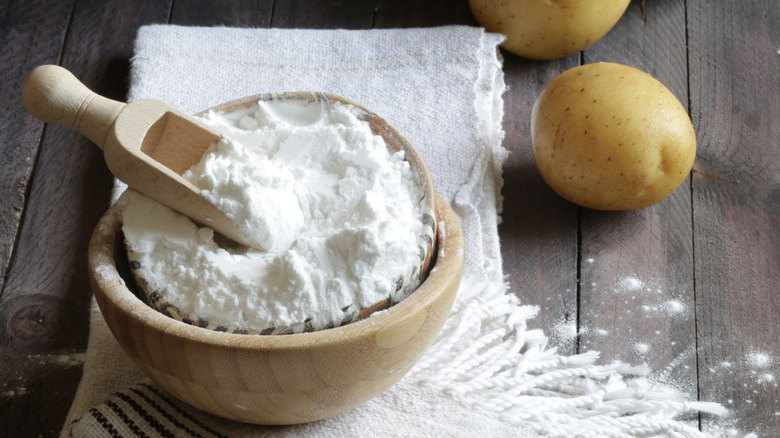The Best Substitute For Cornstarch Is Already In Your Pantry
Few ingredients in the kitchen are as useful as cornstarch. Whether you're learning how to thicken any liquid with it or using it to get the crispiest sweet potato fries, this gluten-free starch has a myriad number of uses in the culinary world and should be regularly stocked in your pantry. But with so many recipes calling for the use of cornstarch, it can be quite alarming to realize you've run out of it and desperately need it in the middle of cooking. Luckily, you don't have to abandon your food and run to the store right away; you can use all-purpose flour as a replacement.
Much like cornstarch, all-purpose flour works excellently as an emulsifier, a thickener, and a coating for fried food. You're also more likely to have it readily available in your kitchen, as most people consider flour as an essential pantry item. To get the same thickening or frying results that cornstarch gives you, you'll have to use twice the amount of all-purpose flour.
Tips on using all-purpose flour as a cornstarch swap
Due to its high starch content, cornstarch can melt into a clear, glossy thickener that does not impart much flavor to the liquid it's added to. These abilities have led many home cooks to consider it the best gelatinization agent for soups and sauces. All-purpose flour, on the other hand, does not share these abilities and tends to give condensed foods a cloudy, milky hue. If you're using flour as a thickening agent over cornstarch, you'll also have to roast it with some butter to create a roux in order to get rid of its raw, unprocessed flavor. Alternatively, you could boil your sauce a bit further to cook down the flour, but keep in mind that this might result in you overcooking your food.
In frying, cornstarch inhibits the creation of gluten and therefore the absorption of water, creating an addictingly crunchy exterior in foods such as Korean-style chicken or stir-fried tofu. Since all-purpose flour has gluten, using it in a batter will not give you the same brittle coating. Instead, it will create a thicker, fluffier coating that has more bite to it.
When it comes to baking, you're better off not replacing cornstarch with all-purpose flour. Because the former works as a tenderizer for cakes and cookies, using flour as a stand-in will only mess with the texture of your baked goods.
Potato starch and rice flour are also great substitutes for cornstarch
While all-purpose flour is perhaps the most commonly found ingredient that can be used as a replacement for cornstarch, it's not the only one. Potato starch, for example, works as a 1:1 swap and has even faster gelatinization properties than its corn counterpart. Its lack of gluten also makes it a perfect candidate for a frying batter. One unique quality of potato starch, however, is that it works best as a thickener when it's added at the end of the cooking process. Its starchiness lessens the more you cook it, so it's not something you can throw in the slow cooker and forget about.
If you don't have any potato starch available at hand, rice flour works just as well as a thickening agent and a crunchy frying batter, albeit with a different set of caveats. Much like all-purpose flour, you'll have to use twice as much in recipes calling for cornstarch. Rice flour does have the advantage of coming out clear instead of murky when used to condense liquids, but brands that are not finely milled might give off a sandy texture.



